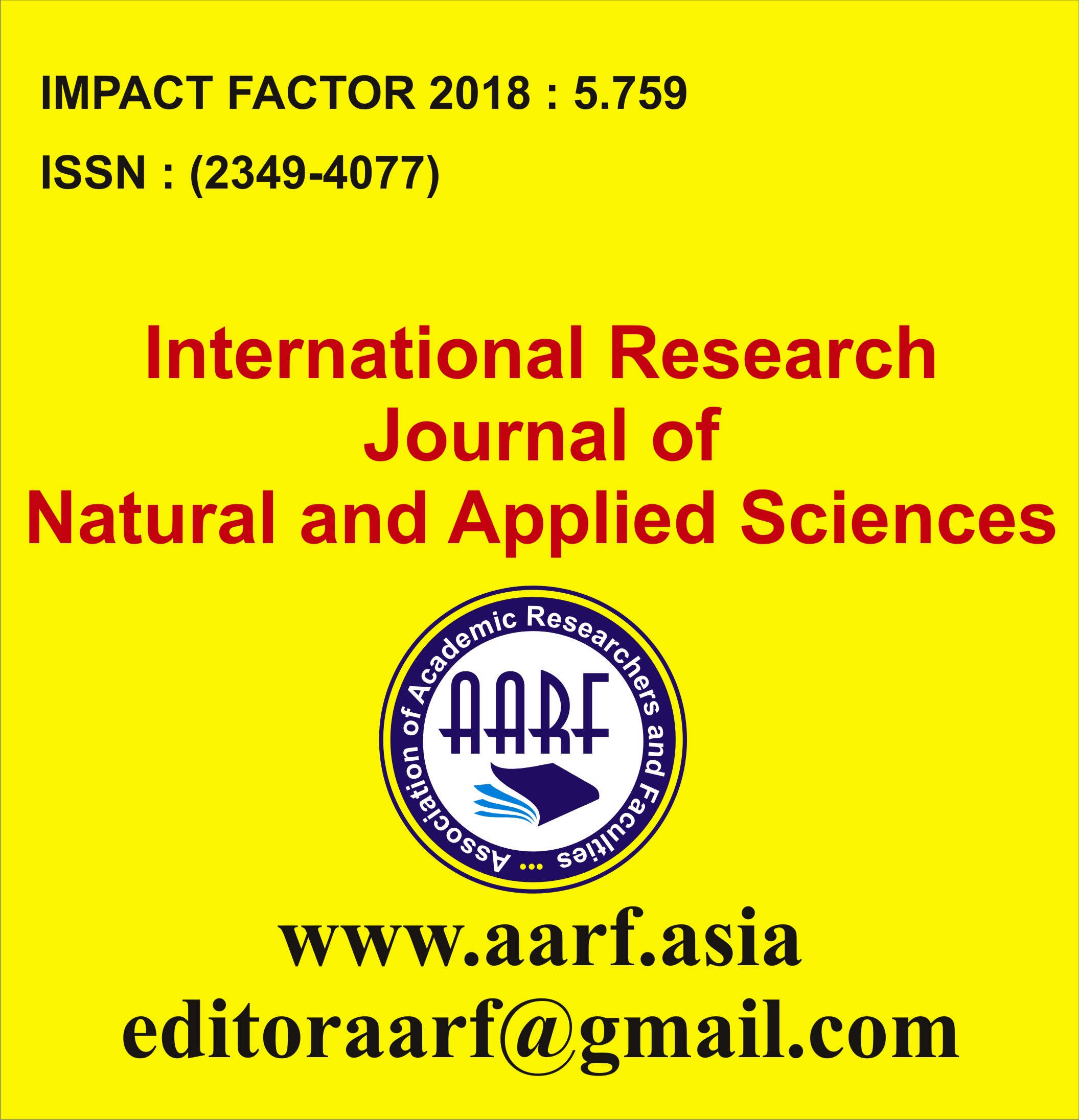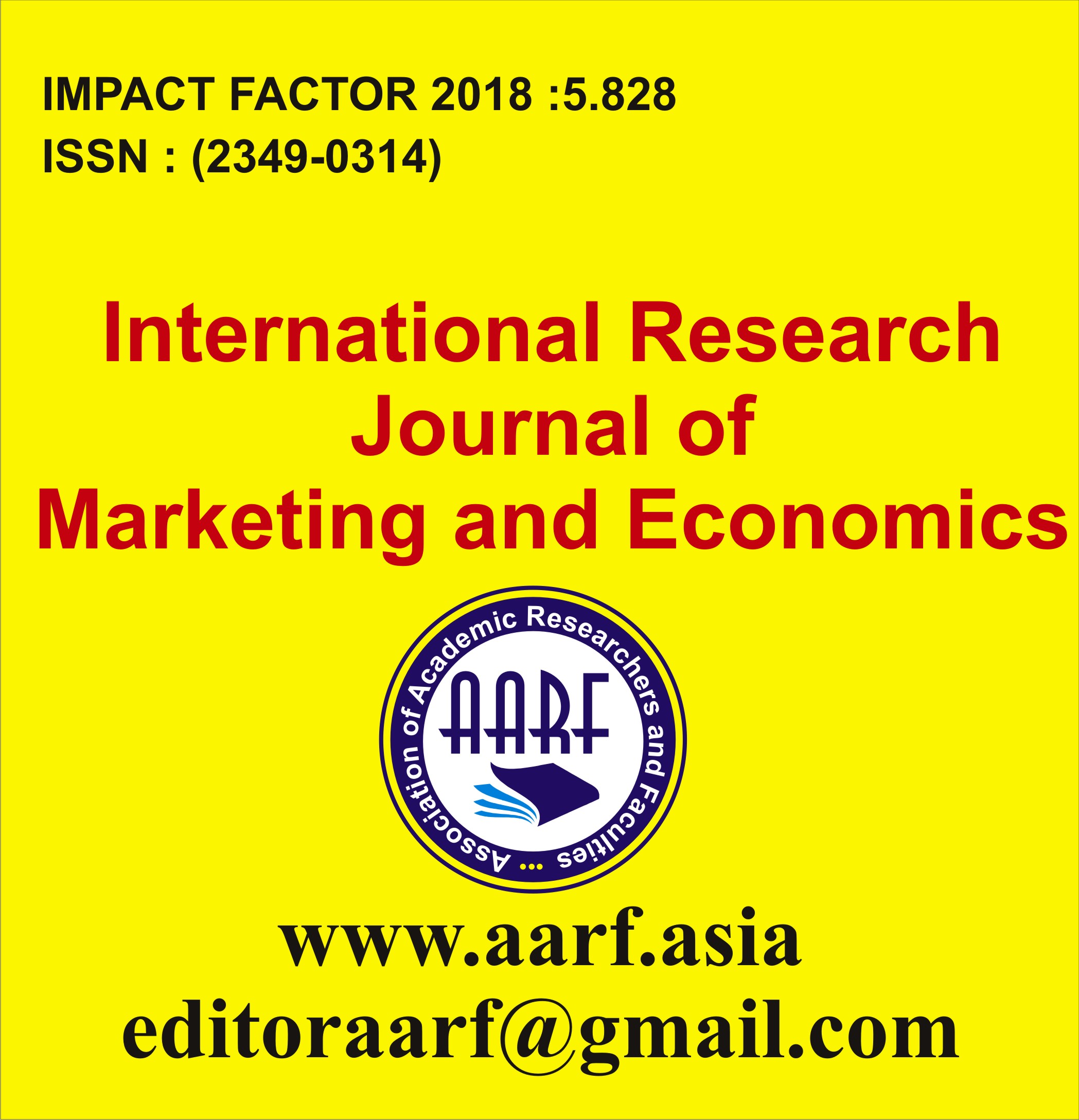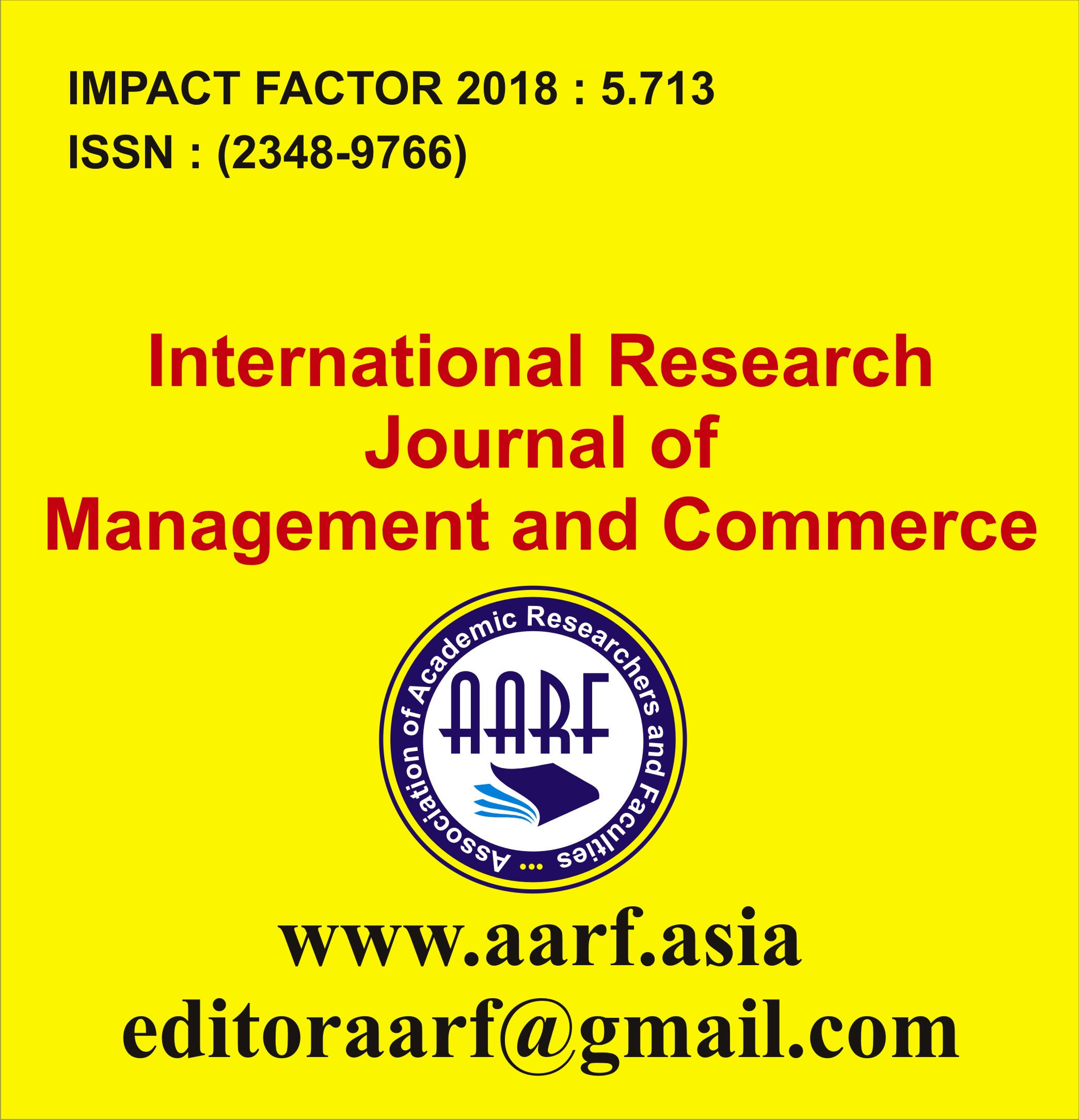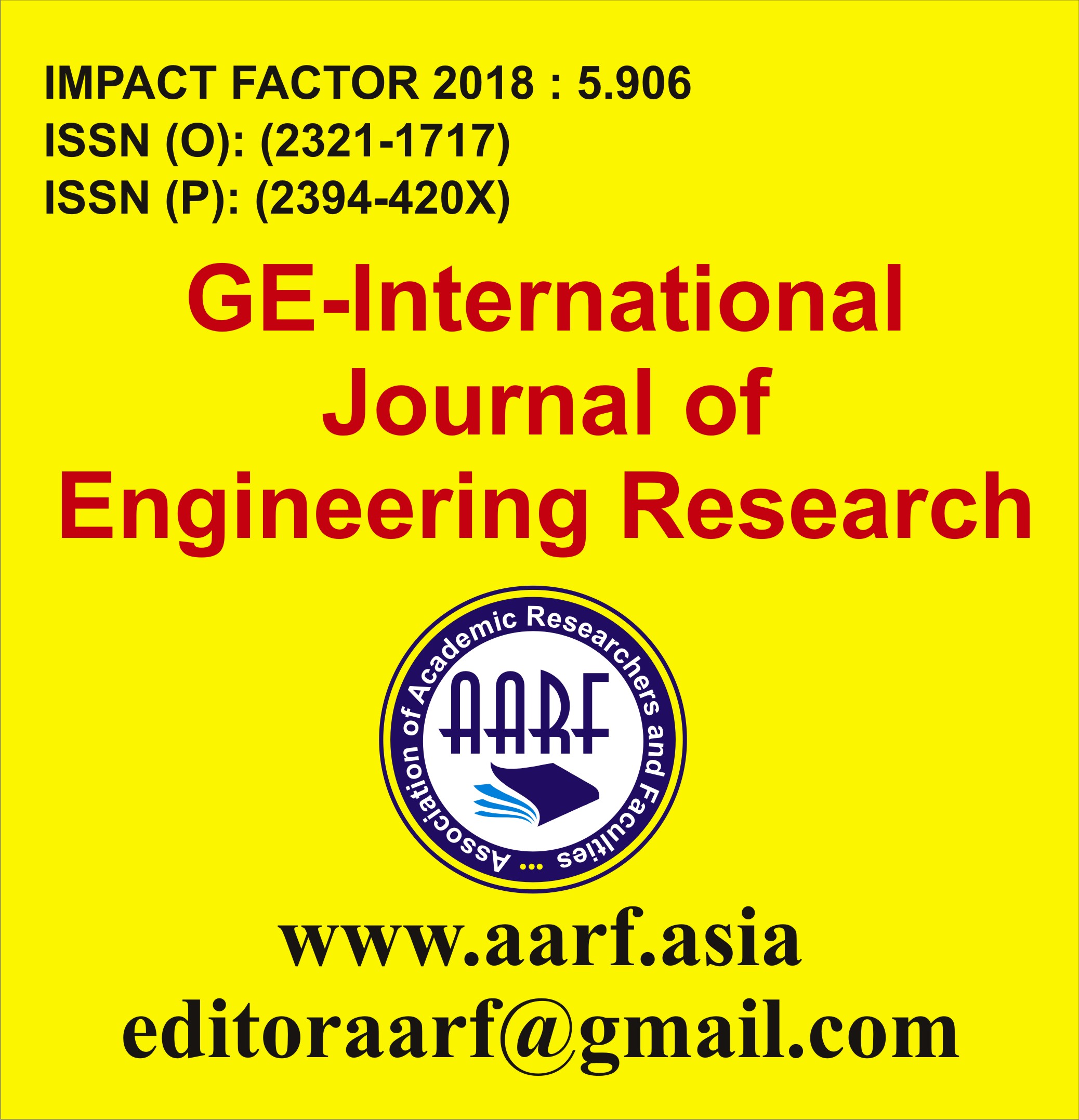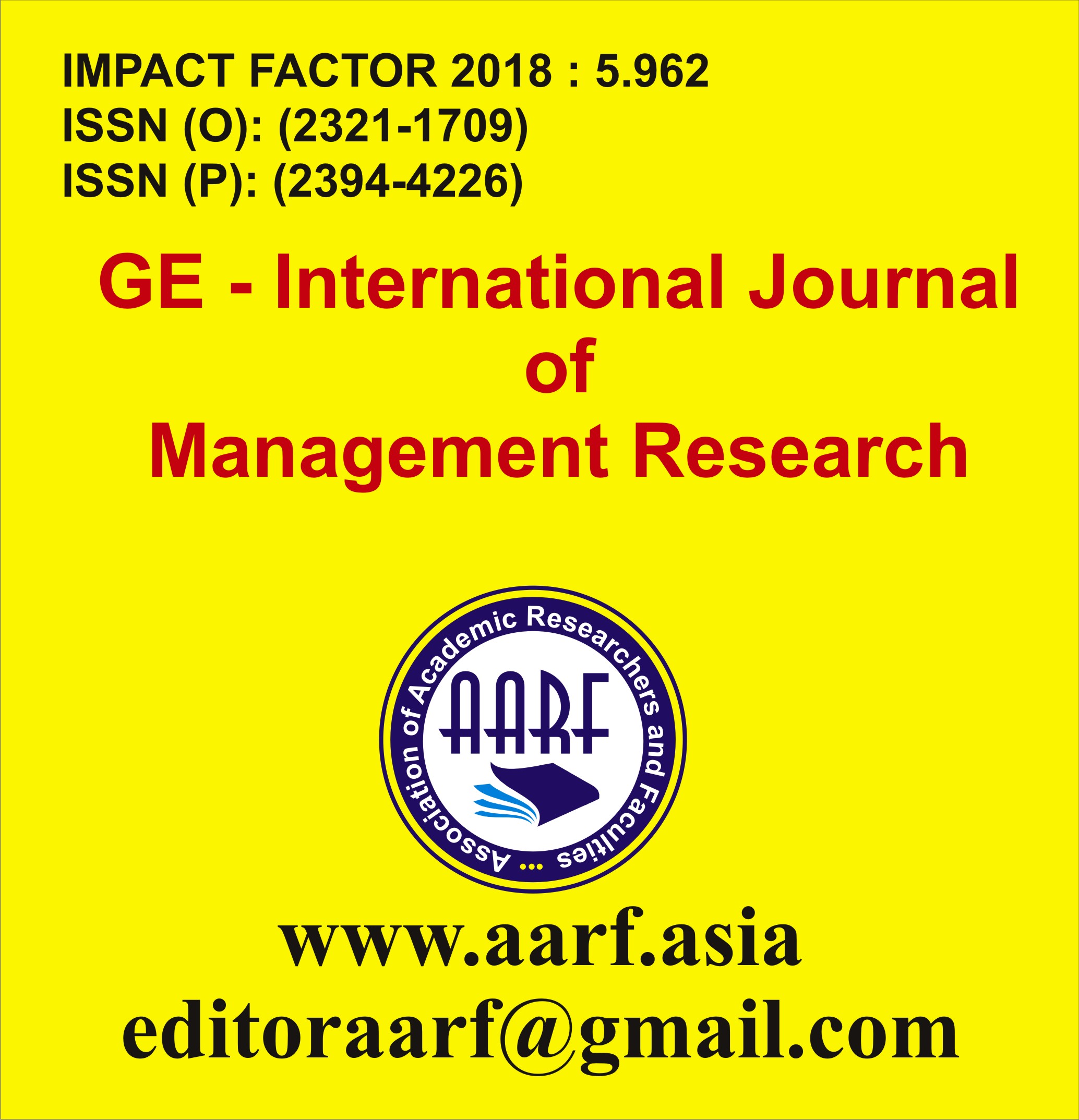
- Current Issue
- Past Issues
- Conference Proceedings
- Submit Manuscript
- Join Our Editorial Team
- Join as a Member

| S.No | Particular | Page No. | |
|---|---|---|---|
| 1 |
Ms. Lydia HarrellAbstract: Emotional literacy which is the ability to understand, express and manage our own emotions with competence and respond to those of others in ways that are helpful to us and others is increasingly becoming important in Indian schools. |
|
1-12 |
| 2 |
Dr. Kum Kum RayAbstract: “ But in my arms till break of day let the living creature lie†“lines from W.H. Auden‟s†|
|
13-14 |
| 3 |
Dipak Choudhury and Dr.Tridib Kr.GoswamiAbstract: Irish dramatist George Bernard Shaw (1856-1950) was a literary critic, a socialist spokesman and a leading figure in the 20th century theater. Although his first profitable writing was music and literary criticism, in which capacity he wrote many highly articulate pieces of journalism, his main talent was for drama and he wrote more than 60 plays. Nearby all his writings deal sternly with prevailing social problems but have a vein of comedy to make their stark themes more palatable. Shaw examined education, marriage, religion, government, health care and class privilege and found them all defective. |
|
15-17 |
| 4 |
MS SURUCHI DR JP AGGARWALAbstract: Place and displacement are prominent features of postcolonial narratives and are inherently integrated with two major concepts of “home†and “identityâ€. Ashcroft observes that according to postcolonial theory “place†does not simply mean “landscapeâ€, in wider perspectives it means a complex interaction of language, history and environment.(8). The postmodernist world has seen the emergence of interdisciplinary and cultural studies as the major thrust areas of academic exploration |
|
18-31 |
| 5 |
MS.KUSUM KANGAR DR JP AGGARWALAbstract: Angela Carter (1940 –1992) was an English novelist and journalist, known for her feminist, magical realism, and picaresque works. With the publication of her first novels in the late 1960’s, Carter received wide recognition and praise in Great Britain for blending gothic and surreal elements with vivid portrayals of urban sufferers and survivors. Critics have praised her wit, creativity, eccentric characters, descriptive wealth, and strongly sustained narrative while sometimes questioning her depth of purpose and suggesting a degree of affectation. Her imaginative transformation of folkloric elements and examination of their mythic impact on sexual relationships began to be fully appreciated |
|
32-43 |
| 6 |
Ms. Harpreet KaurAbstract: The current study was a modest attempt to investigate prospective secondary school teachers' familiarity of the Right to Education Act. The purpose of this study was to test male and female prospective secondary school teachers' understanding of the Right to Education Act in rural and urban areas. A total of 200 potential secondary school teachers from the Gurdaspur District were involved in the study |
|
44-51 |
| 7 |
Dr Surender SinghAbstract: Mahatma Gandhi and Dr B R Ambedkar both aimed to help the people, but they had different approaches and disagreed at times. Gandhiji led the country's fight for freedom, while Ambedkar, who supported political freedom, focused more on social equality. This paper looks at the economic ideas of Ambedkar and Gandhi as they relate to the Indian economy. It also explores the different economic options they proposed. |
|
50-58 |
| 8 |
Dr Devendra Pratap SinghAbstract: Kamala Markandaya’s novels are deeply rooted in the exploration of cultural conflict, particularly between Eastern and Western values, tradition and modernity, and rural and urban life. Her works depict how individuals and societies are shaped by the forces of colonialism, migration, and industrialization, leading to personal and societal tensions. Novels like Nectar in a Sieve highlight the clash between traditional rural life and Western industrialization, while Some Inner Fury and Possession explore the complexities of colonial and post-colonial relationships between India and Britain. In The Nowhere Man, Markandaya addresses the alienation of immigrants in a foreign land, depicting the struggles of identity and belonging in post-colonial Britain. Furthermore, A Silence of Desire portrays the conflict between modern rationality and spiritual tradition within a marriage. Through her characters’ experiences, Markandaya critiques the impact of cultural dominance, racial discrimination, and the challenges of maintaining identity amidst cultural upheaval. Her novels provide a profound commentary on the necessity of adaptation and the complex process of reconciliation in the face of cultural conflict. Kamala Markandaya is one of India's most notable postcolonial writers, and her novels are celebrated for their profound exploration of cultural conflict. As an Indian author writing in English, her works often revolve around the clash between Eastern and Western values, tradition and modernity, and rural and urban settings. These conflicts are intricately woven into the lives of her characters, reflecting both personal and societal struggles. The cultural conflict in Markandaya's novels often represents the broader issues of colonialism, migration, identity, and survival in a changing world. |
|
69-73 |
| 9 |
Dr Devendra Pratap SinghAbstract: Kamala Markandaya’s novels are deeply rooted in the exploration of cultural conflict, particularly between Eastern and Western values, tradition and modernity, and rural and urban life. Her works depict how individuals and societies are shaped by the forces of colonialism, migration, and industrialization, leading to personal and societal tensions. Novels like Nectar in a Sieve highlight the clash between traditional rural life and Western industrialization, while Some Inner Fury and Possession explore the complexities of colonial and post-colonial relationships between India and Britain. In The Nowhere Man, Markandaya addresses the alienation of immigrants in a foreign land, depicting the struggles of identity and belonging in post-colonial Britain. Furthermore, A Silence of Desire portrays the conflict between modern rationality and spiritual tradition within a marriage. Through her characters’ experiences, Markandaya critiques the impact of cultural dominance, racial discrimination, and the challenges of maintaining identity amidst cultural upheaval. Her novels provide a profound commentary on the necessity of adaptation and the complex process of reconciliation in the face of cultural conflict. Kamala Markandaya is one of India's most notable postcolonial writers, and her novels are celebrated for their profound exploration of cultural conflict. As an Indian author writing in English, her works often revolve around the clash between Eastern and Western values, tradition and modernity, and rural and urban settings. These conflicts are intricately woven into the lives of her characters, reflecting both personal and societal struggles. The cultural conflict in Markandaya's novels often represents the broader issues of colonialism, migration, identity, and survival in a changing world. |
|
69-73 |
| 10 |
GOPA BHATTACHARYYAAbstract: Yoga is widely practiced today as a set of physical exercises, but its transformative potential extends far beyond asana: it is a holistic praxis that integrates metaphysics, ethics, cognition, and embodied practices to foster human flourishing. This paper maps the transformative dimensions of classical and contemporary yoga through a dual lens: philosophical (ontology, ethics, soteriology) and psychological (self-regulation, attention, emotion, meaning). Drawing on classical scriptures and modern empirical literature, we propose an integrative model that links specific yogic practices (ethical injunctions, breath regulation, posture, meditation) to proximal mechanisms (attention regulation, interoception, cognitive reappraisal) and distal outcomes (well-being, reduced stress, eudaimonia). A comparative table summarizes mechanisms and outcomes; a conceptual plot (Figure 1) illustrates the cascaded pathways from practice to flourishing. Implications for clinical application, education, and future research are discussed. |
|
74-84 |










